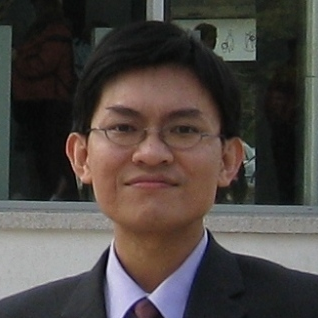Optical Wireless Communication (OWC) Systems
A special issue of Photonics (ISSN 2304-6732). This special issue belongs to the section "Optical Communication and Network".
Deadline for manuscript submissions: closed (30 September 2021) | Viewed by 16981
Special Issue Editors
Interests: optical wireless communication (OWC); free-space optical (FSO) communications; fiber-FSO-5G wireless convergence; underwater wireless optical communications (UWOCs)
Special Issues, Collections and Topics in MDPI journals
Interests: optical wireless communication (OWC); visible light communication (VLC); silicon photonics (SiPh)
Interests: optical wireless communications; next generation access networks; advanced modulation formats and signal processing; optical performance monitoring and management; network optimization; biophotonics
Special Issue Information
Dear Colleagues,
There is a growing interest in the research and development of optical wireless communication (OWC) systems, including free-space optical communications (FSO), visible light communications (VLC), and underwater wireless optical communications (UWOC). This is mainly due to significant advancements in optical sources from high-performance light-emitting diodes (LED), solid-state laser diodes (LD), and high-speed photodiodes (PD) in different optical spectra (i.e., infrared, visible, ultraviolet). Exploring these new optical spectra for the purpose of wireless communication is a big interdisciplinary research challenge. Additionally, due to the storage of traditional radiofrequency (RF) communication spectra, using optical spectra for wireless communication can also release the heavy burden of RF wireless communication. OWC technologies, such as optical camera communication (OCC) and image sensor-based Internet of Things (IoT), visible light positioning (VLP) has received much attention recently. Light fidelity (LiFi), as a special form of OWC, is emerging to provide a high-speed wireless link, supporting multiuser and bidirectional access. It may also be integrated into the future 6G mobile networks.
This Special Issue plans to focus on short- to long-reach OWC, from indoor to outdoor, from ground and underwater. Topics of interest include but are not limited to:
- Optical wireless communication (OWC) systems;
- Free-space optical communications (FSO);
- Visible light communications (VLC);
- Underwater wireless optical communications (UWOC);
- Optical beam forming, beam steering, and diverging;
- LiFi network technologies;
- Hybrid LiFi/Rario-over-Fiber (RoF) technologies;
- Visible light positioning (VLP);
- Optical camera communication (OCC);
- Screen or camera communication;
- Real-time communication system;
- Optical components or coating techniques for optical wireless communication.
Prof. Dr. Hai-Han Lu
Prof. Dr. Chi-Wai Chow
Prof. Dr. Liankuan Chen
Guest Editors
Manuscript Submission Information
Manuscripts should be submitted online at www.mdpi.com by registering and logging in to this website. Once you are registered, click here to go to the submission form. Manuscripts can be submitted until the deadline. All submissions that pass pre-check are peer-reviewed. Accepted papers will be published continuously in the journal (as soon as accepted) and will be listed together on the special issue website. Research articles, review articles as well as short communications are invited. For planned papers, a title and short abstract (about 100 words) can be sent to the Editorial Office for announcement on this website.
Submitted manuscripts should not have been published previously, nor be under consideration for publication elsewhere (except conference proceedings papers). All manuscripts are thoroughly refereed through a single-blind peer-review process. A guide for authors and other relevant information for submission of manuscripts is available on the Instructions for Authors page. Photonics is an international peer-reviewed open access monthly journal published by MDPI.
Please visit the Instructions for Authors page before submitting a manuscript. The Article Processing Charge (APC) for publication in this open access journal is 2400 CHF (Swiss Francs). Submitted papers should be well formatted and use good English. Authors may use MDPI's English editing service prior to publication or during author revisions.
Keywords
- optical wireless communication
- visible light communication
- optical wireless positioning
- free-space optical communications
- camera communication
- underwater wireless optical communications
- optical components
- optical coating







